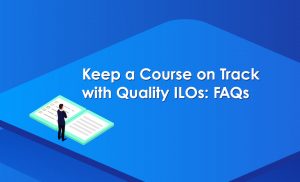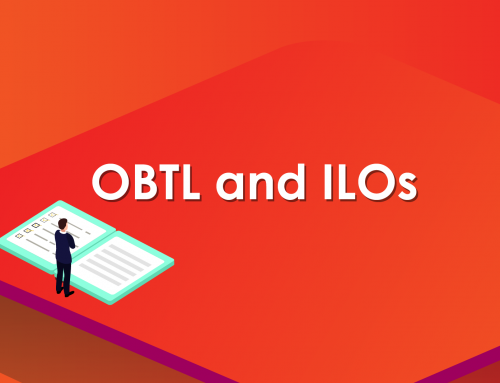Project Description
Keep a Course on Track with Quality ILOs: FAQs

By Katrine Wong, Director of the Centre for Teaching and Learning Enhancement
Q: What are intended learning outcomes (ILOs)?
A: They are:
i. Statements of what learners are expected to be able to know and do upon completing a learning experience (be it a course or a programme);
ii. Statements that are expressed from the learners’ perspective;
iii. Statements that describe what learners are able do upon completing a course or a programme, NOT what instructors plan to teach in a course or a programme.
Q: Are ‘objectives’ and ‘outcomes’ interchangeable?
A: No.
The difference between the two lies in the emphasis on who will be performing the activities and delivering corresponding results. As a rule of thumb, course/programme objectives describe what an instructor or a programme aims to do, whereas course/programme learning outcomes describe, using specific, observable and measurable terms, what a student is able to do upon completing a course/programme.
Q: What differentiates ILOs of a course from ILOs of a programme?
A: At the course level, ILOs articulate specific skill sets and subject matter knowledge that learners are expected to achieve by the end of each course. At the programme level, ILOs give an integrated description of the cumulative knowledge, skills and attributes that learners are expected to display upon successful completion of each programme.
Q: Why care about ILOs?
A: ILOs are important for several reasons, including that:
i. They make qualifications more transparent for learners: they will know, for example, what they have to be able to do by the end of a course in order to receive a Pass or above.
ii. They allow potential employers or postgraduate admission panels, for example, to have a better understanding of what knowledge, skills and attributes graduates have acquired, and therefore, be able to recruit the suitable, well-equipped candidates.
iii. They benefit quality assurance as they increase transparency and comparability between qualification standards, and by extension, accreditation, licensing and so on.
You are encouraged to watch this video (link) prior to writing or updating your learning outcomes; however, guidance can be provided at any point on an as-needed basis. Please contact Prof. Katrine Wong at kwong@um.edu.mo.
Related:
Liu, S. (2016). Quality Assurance and Institutional Transformation: the Chinese Experience (Higher Education in Asia: Quality, Excellence and Governance). Springer Singapore. https://doi.org/10.1007/978-981-10-0789-7.
Rosa, M. J. & Amaral, A. (Eds.) (2014). Quality Assurance in Higher Education: Contemporary Debates. Palgrave Macmillan.
Schindler, L., Puls-Elvidge, S., Welzant, H., & Crawford, L. (2015). Definitions of quality in higher education: A synthesis of the literature. Higher Learning Research Communications, 5(3), 3-13. http://dx.doi.org/10.18870/hlrc.v5i3.244
